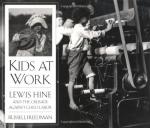|
This section contains 2,181 words (approx. 8 pages at 300 words per page) |

|
Steven Friedman
About the author: Steven Friedman is a teacher at Brandeis Hillel Day School in California.
Teachers should not be afraid to encourage their students to protest against American companies that use sweatshop labor. Students are often invited to participate in moral or political causes—such as organizing food drives or serving meals to the homeless—so the promotion of student activism against the use of sweatshops should not be considered too controversial or politically biased. While educators should pursue a fair and balanced analysis of social issues in the classroom, they must also recognize that teaching is never politically neutral. Inviting students to take direct action against the use of sweatshops fosters the desire for social justice and political engagement that creates positive change...
|
This section contains 2,181 words (approx. 8 pages at 300 words per page) |

|




